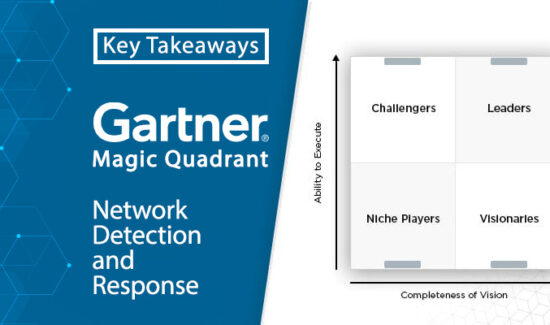IT Monitoring and SLA Compliance: A Match Made in Heaven


Solutions Review’s Contributed Content Series is a collection of contributed articles written by thought leaders in enterprise software categories. Martin Hodgson of Paessler AG introduces us to SLA Monitoring, which combines IT Monitoring and SLA Compliance.
As the old adage goes, knowledge is power. And in 2024, knowledge has never been more critical for IT managers, who are expected to keep track of a myriad of different systems across increasingly complex environments.
With yet another spate of high-profile cyber-attacks taking place in recent months – which saw students at Cambridge University lose internet access and streaming platform Roku experience a breach that impacted 500,000 of its accounts – it’s clear that businesses and institutions alike have no choice but to secure their systems.
IT managers need to identify breaches to IT infrastructure, particularly those that will impact end-users, at speed, or they risk putting their customers at risk of both financial and reputational damage.
However, it’s difficult to take a proactive approach to issue resolution without having a clear picture of what ‘normal’ looks like for your IT landscape. This is where SLAs (Service Level Agreements) come in. An SLA defines expected levels of service between a given service provider and a customer. Just like a business leader who delivers on KPIs (key performance indicators) to clients, SLAs enable IT managers to clearly communicate to their customers how service standards are being upheld.
SLA Monitoring: What Is It and Why Do We Need It?
The Information Technology Infrastructure Library (ITIL) defines an SLA as a documented agreement between a service provider and a customer that identifies ‘both services required and the expected level of service.’ In short, it’s a way to keep both parties accountable. If your organization strives to deliver a very high uptime of the devices used in your offering, then the service level objective is set to 99.999 percent. Any service provider wants to keep systems available 24/7, to boost employee productivity and end-user experience. Though 100 percent availability isn’t always possible due to maintenance and outages, SLA monitoring makes issue resolution more targeted, keeping downtime to a minimum as a result.
Marrying SLA software to your IT infrastructure enables reactions to become more defined, based on values entered. Components are given varying levels of importance, so managers understand which part of the service to prioritize first. Within the IT landscape, different components can be assigned specific ‘tags’ that indicate common changes of state. Let’s look at three component examples and possible issues that could occur.
SLAs in Action
Imagine that on a given day in the office, the printers run out of ink, switches become overloaded on a specific interface, and discs run out of space, resulting in hardware errors. These are all issues that impact employee experience, but not to the same extent.
IT managers can color-coded components that affect the SLA agreement with the customer in green. For example, if an issue with a sensor is short-lived, not breaching the SLA, it can be added to a database called “Components Impacting SLA.” IT managers are able to add notes to these routine issues and identify whether the scenario is likely to escalate in the future.
However, when green sensors go down, and no action is taken, the SLA percentage value, shown via a dashboard, will decrease. Once the SLO (Service Level Objective) value has been reached, the value changes to red to indicate an SLA breach. This ‘traffic light’ system means that managers can understand which issues are most likely to affect the customers at any given moment and react to those first.
This is a massive help in terms of assisting IT managers with time management and prioritization. Oftentimes, IT teams are stretched beyond breaking point and unsure of which issue to ‘firefight’ first. Defined filters ensure that the most critical data is placed front of mind.
Customers are always happier when kept informed, and SLA software gives businesses the choice to draw data into quarterly or monthly reports. These can then be shared with customers via a pdf, so that they have full transparency when it comes to service levels. It’s a win-win; peace of mind for the customer, and valuable knowledge for IT teams, who can spot trends in downtime and plan for the future based on historical data, rather than guestimates.
The Long and Short of It
IT monitoring in isolation enables managers to consolidate all necessary information under one umbrella, making it visible in one unified view on the screen. It paints a picture of an organization’s digital landscape. Marrying that monitoring software to SLAs makes the data ‘sing.’ Exporting insights from your monitoring software and connecting them with an SLA tool gives your data direction and purpose.
Monitoring software still plays an integral role in terms of visibility across environments, but an SLA agreement enables IT teams to focus their time and effort on the most pressing issues at hand. Much like a doctor on call, who is able to respond at speed when provided with clear locations and directions to a given incident, monitoring speeds up the digital ‘diagnosis’ process. It negates the need for IT teams to trawl through hundreds of notifications to get to the heart of the problem and facilitates reactions at speed.
In 2024, business leaders are more discerning than ever when investing in any area of the organization – whether that be IT, marketing, or even talent. Customers want to know that any service they invest in is one that is going to demonstrate good ROI (Return on Investment) and do what it says on the tin. SLAs make that possible by defining a clear base level of service, and then providing full visibility into whether standards were met or not. It’s one way to give customers the peace of mind on the IT investment they deserve.



















